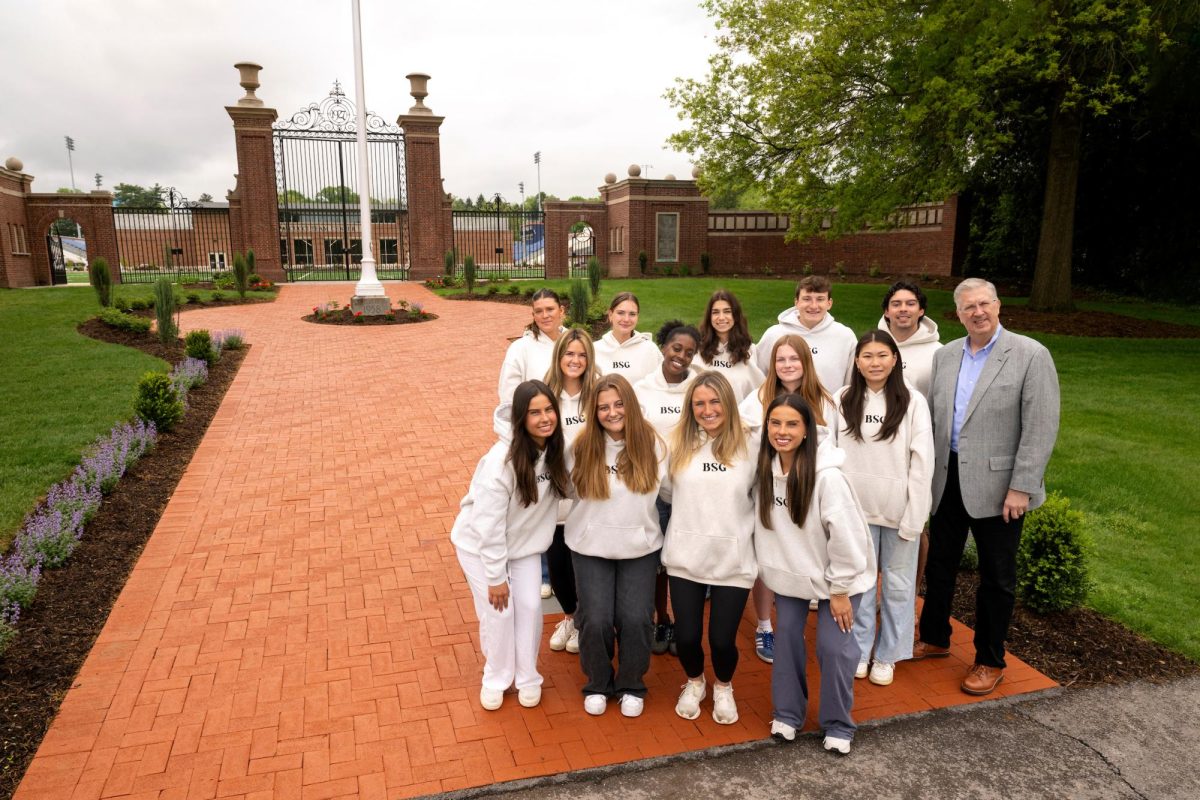With fall sports coming into play right now, two Bucknell University economics professors offer new research that suggests that the large and vocal crowd impacts the outcome of one specific sport in particular: soccer.
Professors of Economics Chris Magee and Amy Wolaver, husband and wife, scientifically confirm the influence large crowds in packed stadiums have on the action on the field. Because there were no fans in the local soccer stadiums over the summer, as soccer is a fall sport on the high school and collegiate level, the researchers used the Women’s World Cup to conduct their experiment. The hope is that the behavior in the World Cup can match all types of games.
Their study, Crowds and the Timing of Goals and Referee Decisions, recently published in the Journal of Sports Economics, analyzes the per-minute rate at which goals are scored and yellow cards and penalty kicks are given. They found that the more fans there are in the stadium, the faster that this rate increases over the course of the game.
According to Magee, “Goals tend to be scored at higher rates later in games,” She added, “We find that crowds help explain why this happens. The more fans there are in the stadium and the more vocal they get toward the end of the match, the greater the chance of a goal being scored in the final few minutes.”
The two professors wrote that during the COVID-19 pandemic, researchers were provided with the perfect testing opportunity to determine how the removal of crowds was conducive to changes in athletic behavior, performance and game outcomes.
“This paper uses this natural experiment to examine one potential impact of crowds that, to our knowledge, has never been previously investigated. It relates to the timing of goals and referee decisions over the course of a game,” Wolaver says. “We hypothesize that crowds increase the sense of urgency to score in the context of team play as the game nears its end, and we discuss some theoretical reasons for this prediction.”
Magee and Wolaver tested their hypothesis by formulating an empirical model that would predict the probability of home or away teams scoring goals, and receiving penalty cards or kicks for every minute of the game.
“Gradually building crowd pressure leads to increasing urgency on the part of players to score as the game nears its end,” Wolaver says. “This urgency leads to increased goals and more aggressive play by defenders, which also results in more cards and more penalty kicks given out per minute.”
In 12 of the first 46 games, a goal had been scored in the 90th minute of the game or in stoppage time. The empirical work by Magee and Wolaver shows that crowds can contribute to these late goals.
To find out more about both Magee’s and Wolaver’s research, especially if you plan to visit a soccer game this fall, read their article in the Journal of Sports Economics.





















